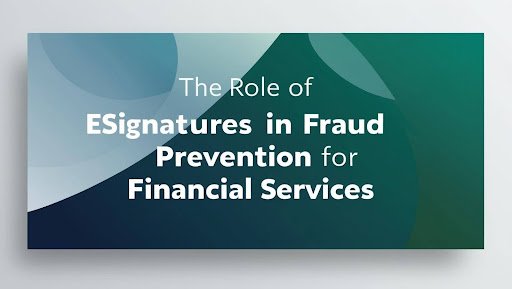Financial services firms handle billions of dollars in transactions daily, making them prime targets for fraud, identity theft, and document manipulation. Traditional signature-based approvals are highly vulnerable to forgery and unauthorized alterations, exposing institutions to financial and legal risks.
With fraud-related losses in the banking sector exceeding $440 billion annually, financial organizations must adopt digitally secure, fraud-resistant solutions. This is where electronic signatures play a critical role in preventing fraud, ensuring compliance, and streamlining financial transactions.
In this article, we explore how eSignatures prevent fraud in financial services, why businesses need an API-driven eSignature solution, and why Certinal is the best DocuSign alternative for secure digital transactions.
The Growing Fraud Threat in Financial Services1. Common Types of Financial Fraud
✅ Document Forgery – Altered or faked contracts, loan applications, and account opening forms.
✅ Identity Theft – Criminals use stolen identities to open accounts, secure loans, or authorize transactions.
✅ Check & Wire Fraud – Manipulation of physical signatures for unauthorized fund transfers.
✅ Internal Fraud – Employees or third parties tampering with approvals or financial records.
2. Compliance Pressures on Financial Institutions
Financial firms must comply with strict regulations such as:
- FINRA, SEC, and CFPB (US) – Strict security controls for financial transactions.
- eIDAS (EU) – Requires advanced or qualified eSignatures for financial agreements.
- AML/KYC Regulations – Digital identity verification to prevent money laundering and fraud.
Failing to implement secure digital transaction processes can result in millions in penalties, lawsuits, and reputational damage.
How eSignatures Prevent Fraud in Financial Transactions
1. Tamper-Proof Digital Signatures
- Uses AES-256 encryption and cryptographic hashing to ensure documents cannot be altered after signing.
- If any change is made, the signature is automatically invalidated, preventing fraud.
2. Multi-Factor Authentication (MFA) for Identity Verification
- Requires users to verify their identity via email OTP, SMS, biometrics, or government ID authentication before signing.
- Ensures only authorized individuals can approve transactions.
3. Secure Audit Trails & Digital Fingerprinting
- eSignatures capture detailed digital logs, including timestamps, IP addresses, device information, and geolocation.
- Provides a legally admissible fraud-prevention mechanism that ensures transparency.
4. Smart Contract & Blockchain Verification
- Advanced financial institutions use blockchain-powered eSignature verification to create immutable transaction records.
- Prevents fraud by ensuring contracts cannot be tampered with post-execution.
5. Automated Fraud Detection with AI-Powered Risk Analysis
- AI-powered fraud detection flags suspicious signing behaviors, unusual locations, and identity mismatches.
- Reduces internal and external fraud risks by analyzing digital transaction patterns.
Why Financial Institutions Need an API-Driven eSignature Solution
For banks, lending firms, and financial institutions, integrating eSignature API into their digital platforms is crucial for secure operations. Here’s why:
1. Seamless Integration with Banking & Loan Platforms
- eSignature APIs allow real-time document signing within core banking systems, loan management software, and payment platforms.
- Eliminates the need for physical paperwork while ensuring security.
2. Automated Compliance with AML & KYC
- eSignature APIs automatically verify customer identities and maintain records to ensure compliance with AML & KYC regulations.
- Prevents fraudulent account openings and unauthorized transactions.
3. Faster Loan Approvals & Secure Fund Transfers
- Reduces manual intervention, enabling instant loan approvals and legally binding digital agreements.
- Ensures fraud-proof authorization for large-scale fund transfers and investments.
4. Scalable Security for High-Volume Transactions
- Supports thousands of transactions per second while maintaining end-to-end encryption and fraud detection.
- Works for enterprise-level financial institutions, fintech startups, and digital banks.
Why Certinal is the Best eSign Solution for Fraud Prevention
While DocuSign has long been a market leader, many financial institutions are now actively looking for DocuSign alternatives due to its high costs, rigid pricing, and security limitations. Certinal offers a more secure, scalable, and compliance-driven solution.
🔹 Advanced Fraud Prevention – Multi-layered authentication, blockchain verification, and AI-driven fraud detection.
🔹 Enterprise-Grade API Integration – Seamlessly connects with core banking, wealth management, and insurance platforms.
🔹 Tamper-Proof Signatures – Uses cryptographic hashing, secure audit trails, and biometric authentication.
🔹 Regulatory Compliance – Fully meets eIDAS, ESIGN Act, SEC, FINRA, and AML/KYC standards.
🔹 Cost-Effective & Scalable – Unlike DocuSign, Certinal offers customized pricing and flexible deployment options for financial firms.
With Certinal’s eSignature API, financial institutions can eliminate fraud risks, enhance compliance, and offer a secure, seamless digital banking experience.
Conclusion: Securing Financial Transactions with eSignatures
In an industry where fraud can result in billions in losses, financial firms must invest in secure, verifiable, and compliant eSignature solutions. By adopting a fraud-proof eSignature platform, organizations can:
✅ Prevent document forgery and unauthorized alterations.
✅ Ensure global regulatory compliance with tamper-proof audit logs.
✅ Automate fraud detection with AI-powered risk analysis.
✅ Seamlessly integrate eSignature APIs into core banking and financial systems.
🚀 Looking for a secure, compliant eSignature solution?Get started with Certinal and experience fraud-free financial transactions today!

